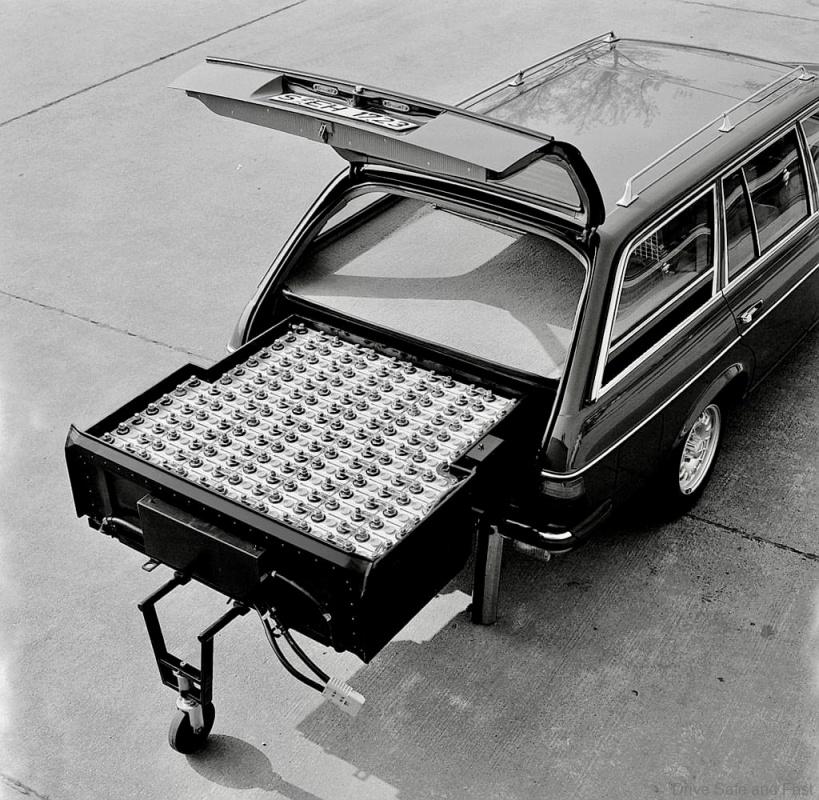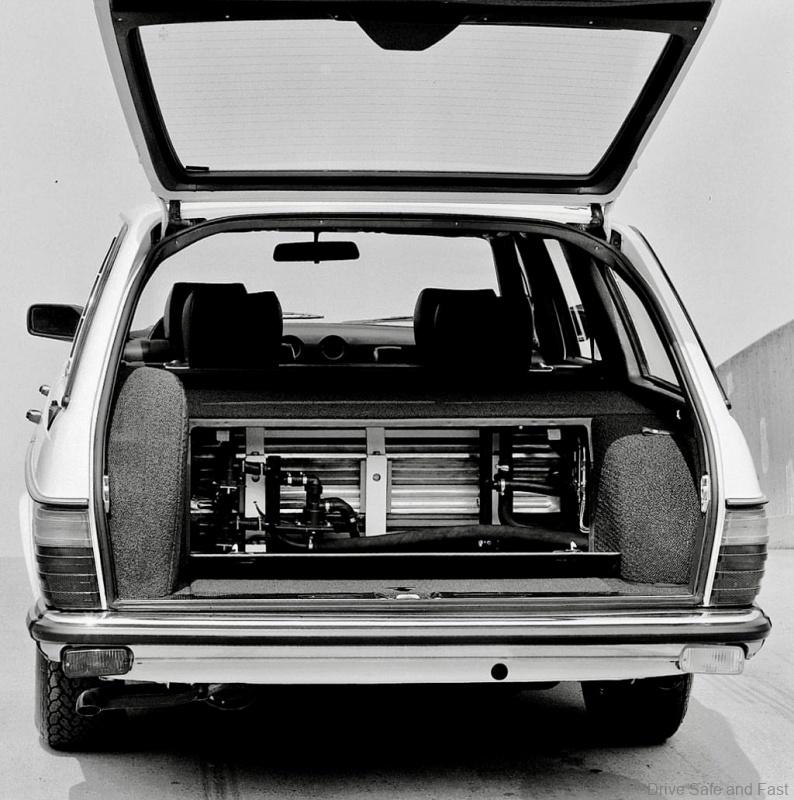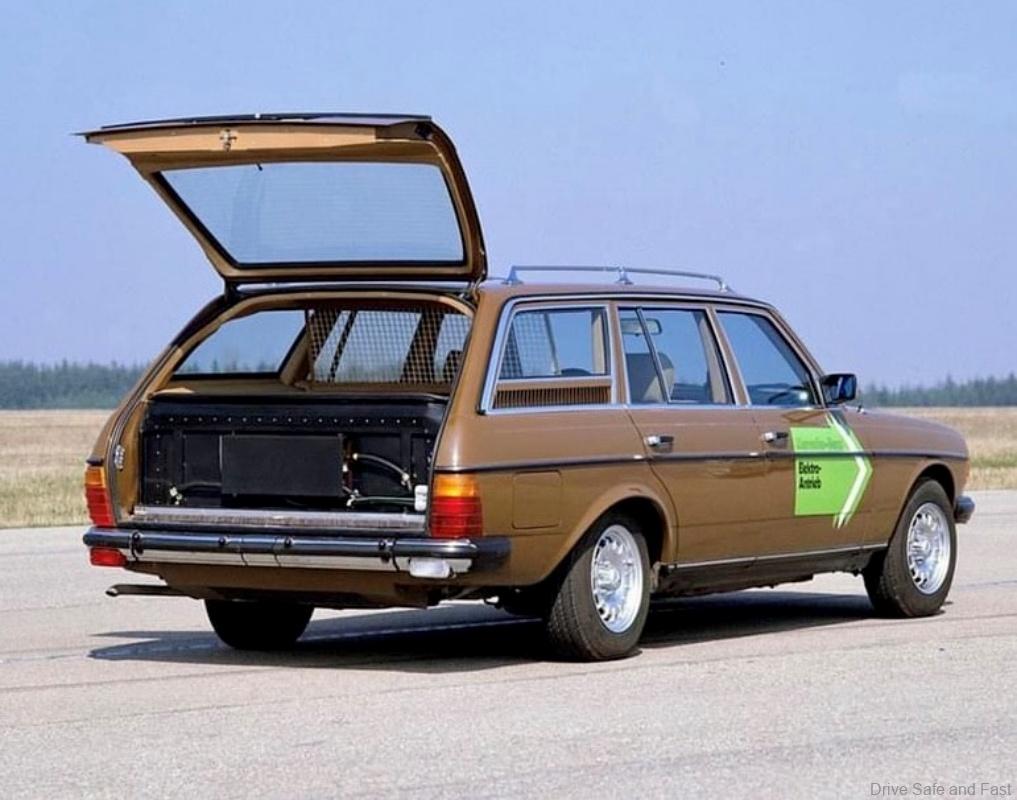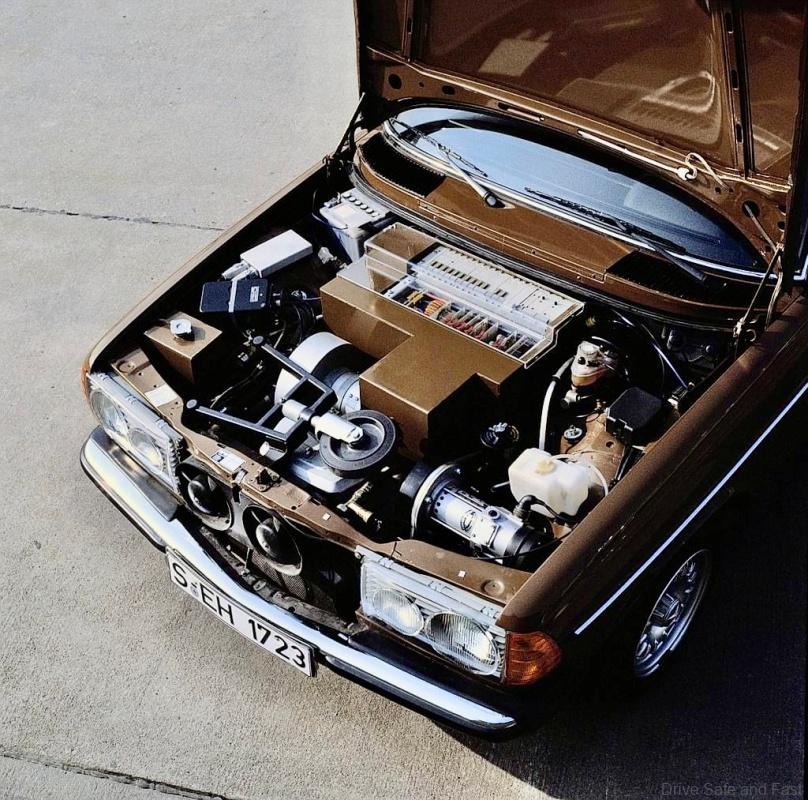While many think EVs are a fairly new creation, Mercedes-Benz already had one in 1982
In 1982, Mercedes-Benz unveiled its pioneering all-electric station wagon, marking a significant milestone in automotive history amidst a global fuel crisis. This innovative vehicle, based on the S123 wagon model, was Mercedes-Benz’s response to the pressing need for more sustainable transportation options.

The electric wagon was equipped with a 41hp motor, mounted in the engine bay traditionally reserved for internal combustion engines. This motor powered the rear wheels through a four-speed automatic transmission, adapted from the one used in the regular production W123 models.
Moreover, the choice of this transmission ensured that the electric version maintained a familiar driving experience. One of the most striking features of this early electric vehicle (EV) was its battery pack, which weighed approximately 1,322 pounds (600kg). Due to its substantial size, the battery pack occupied most of the wagon’s cargo area.

To accommodate this large battery, the rear windows were designed to be shorter, and metal air vents were integrated to manage cooling. The batteries were neatly arranged in a tray within the trunk, hidden from view. Despite its robust design, the battery provided a limited range of up to 62 miles (100km) on a full charge.
On top of that, recharging was facilitated through a standard European 220-volt household outlet, reflecting the vehicle’s practical design for everyday use in that region. However, the 41 horsepower was considered insufficient for the car’s needs, leading Mercedes-Benz to incorporate an additional feature for enhanced performance.

To address concerns about the vehicle’s range and power, Mercedes-Benz added a two-cylinder four-stroke gasoline engine as a range extender. This supplementary engine provided an extra 30 miles (50km) of driving range, effectively converting the electric wagon into a plug-in hybrid. This hybrid solution allowed for greater flexibility and extended the vehicle’s usability beyond the limitations of its electric only range.

This early attempt at combining electric and hybrid technologies showcased Mercedes-Benz’s commitment to innovation and sustainability, even in the early 1980s. The integration of an electric motor with a range-extending gasoline engine paved the way for future advancements in hybrid technology, setting a precedent for the development of more efficient and eco-friendly vehicles in the decades to follow.



